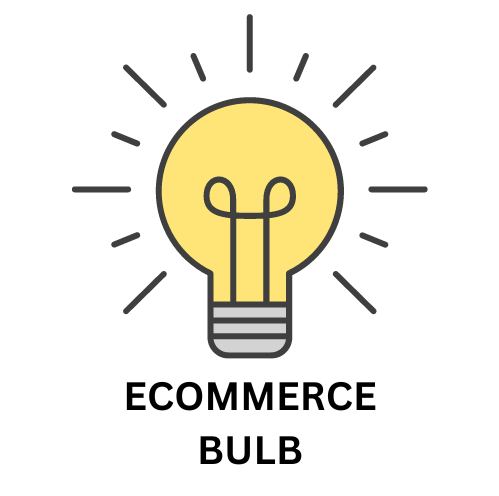In this blog post, we are going to discuss the difference between Optimizely Personalization vs A/B Testing, trying to think more about them in a holistic approach.
Optimizely Personalization vs A/B testing:
Optimizely offers both A/B testing and personalization tools, each serving distinct purposes in website optimization:
A/B Testing
- Purpose: Compares different versions of a webpage or element to determine which performs better.
- Process: Create variations (e.g., different headlines, CTAs), split traffic to show each variation to a specific percentage of visitors and analyze user behavior to identify the best-performing version.
- Use Cases:
- Optimizing Specific Elements: Ideal for testing individual elements like buttons, forms, or images.
- Testing New Layouts: Useful for comparing a new design against the current one.
- Gathering Initial Data: Beneficial when you lack significant user data and need insights on user preferences.
Personalization
- Purpose: Customizes the user experience based on individual user data (e.g., browsing history, past purchases).
- Features: Includes customer profiles, predictive targeting, and dynamic content injection.
- Use Cases:
- Targeted Content Delivery: Tailors content based on user behavior and demographics.
- Enhanced User Experience: Creates a more engaging and relevant experience for users.
- Improving Conversion Rates: Personalized messages and offers are more likely to lead to conversions.
When to Use Each
- A/B Testing: Best for broad audience optimizations and when testing specific elements or new layouts.
- Personalization: Ideal for delivering tailored experiences to well-defined audience segments and improving engagement through targeted content.
Both tools can be powerful when used strategically, often complementing each other to enhance overall website performance.

Is Personalization the same as AB testing?

No, personalization and A/B testing are not the same, though they are both used to optimize user experiences on websites.
A/B Testing
- Objective: To compare two or more versions of a webpage or element to see which performs better.
- Method: Split traffic between different versions and analyze which one achieves the desired outcome (e.g., higher click-through rates).
- Example: Testing two different headlines to see which one gets more clicks.
Personalization
- Objective: To tailor the user experience based on individual user data and behavior.
- Method: Use data such as past behavior, demographics, and preferences to deliver customized content and experiences.
- Example: Showing product recommendations based on a user’s previous purchases or browsing history.
Key Differences
- Scope: A/B testing is about finding the best version for a broad audience, while personalization focuses on creating unique experiences for individual users.
- Data Usage: A/B testing uses aggregated data to determine the best-performing version, whereas personalization uses specific user data to tailor experiences.
Both techniques can be used together to enhance overall website performance. For instance, you might use A/B testing to determine the best layout and then apply personalization to tailor content within that layout for different user segments.

What are the different types of Optimizely tests?

Optimizely offers several types of tests to help optimize user experiences on websites. Here are the main types:
1. A/B Testing
- Description: Compares two or more versions of a webpage to see which one performs better.
- Use Case: Ideal for testing changes to a single element, like a headline or button.
- Example: Testing two different headlines to see which one gets more clicks.
2. Multivariate Testing (MVT)
- Description: Tests multiple variables simultaneously to see which combination performs best.
- Use Case: Useful for pages with several elements that need optimization.
- Example: Testing different combinations of headlines, images, and buttons to find the most effective layout.
3. Multi-Page (Funnel) Testing
- Description: Tests changes across multiple pages in a user journey.
- Use Case: Ideal for optimizing a series of steps, like a checkout process.
- Example: Testing different versions of a multi-step sign-up process to see which one leads to more completions.
These tests can be used individually or in combination to gather insights and improve user engagement and conversions on your website.

What is better than A B testing?

While A/B testing is a powerful tool for optimizing user experiences, there are several alternatives and complementary methods that can provide deeper insights or be more suitable in certain scenarios:
1. Multivariate Testing (MVT)
- Description: Tests multiple variables simultaneously to see which combination performs best.
- Use Case: Useful for pages with several elements that need optimization.
- Example: Testing different combinations of headlines, images, and buttons to find the most effective layout.
2. User Behavior Tracking
- Description: Analyzes how users interact with your product to identify patterns and areas for improvement.
- Use Case: Helps understand user journeys and identify friction points without running experiments.
- Example: Using tools like Google Analytics to track user paths and interactions.
3. Heatmaps and Scroll Maps
- Description: Visual representations of where users click, move, and scroll on a page.
- Use Case: Identifies which parts of a page are getting the most attention and which are being ignored.
- Example: Using heatmap tools to see which areas of a landing page are most engaging.
4. Session Recordings
- Description: Records user sessions to see exactly how they interact with your site.
- Use Case: Provides qualitative insights into user behavior and identifies usability issues.
- Example: Watching session recordings to understand where users are getting stuck.
5. Usability Testing
- Description: Involves real users performing tasks to identify usability issues.
- Use Case: Provides direct feedback on user experience and interface design.
- Example: Conducting usability tests to see how easily users can navigate a new feature.
6. User Feedback Surveys
- Description: Collects direct feedback from users about their experiences and preferences.
- Use Case: Gathers qualitative data to understand user needs and pain points.
- Example: Using surveys to ask users about their satisfaction with a new feature.
7. Beta Testing
- Description: Releases a product or feature to a limited audience before a full launch.
- Use Case: Identifies bugs and gathers feedback in a real-world environment.
- Example: Running a beta test for a new app update to gather user feedback and fix issues.
8. Feature Flagging
- Description: Enables or disables features for specific user segments to test their impact.
- Use Case: Allows for controlled rollouts and testing of new features.
- Example: Using feature flags to test a new checkout process with a subset of users.
Each of these methods can provide valuable insights and can be used in conjunction with A/B testing to create a comprehensive optimization strategy. The best approach depends on your specific goals, resources, and the nature of your product.

What is the difference between user acceptance testing and a b testing?

User Acceptance Testing (UAT) and A/B testing serve different purposes in the software development and optimization process:
User Acceptance Testing (UAT)
- Objective: To ensure that the software meets the business requirements and is ready for deployment.
- Participants: Typically involves end-users or clients who validate the software against predefined acceptance criteria.
- Focus: Verifies that the software functions as intended and meets the needs of the users.
- Example: A client tests a new feature to ensure it works as expected before the software goes live.
A/B Testing
- Objective: To compare two or more versions of a webpage or feature to determine which performs better.
- Participants: Involves real users who are randomly assigned to different versions of the webpage or feature.
- Focus: Measures user behavior and preferences to optimize for better performance (e.g., higher conversion rates).
- Example: Testing two different call-to-action buttons to see which one gets more clicks.
Key Differences
- Purpose: UAT focuses on validating the software against business requirements, while A/B testing focuses on optimizing user experience and performance.
- Participants: UAT involves specific end-users or clients, whereas A/B testing involves a broader audience of real users.
- Outcome: UAT aims to ensure the software is ready for release, while A/B testing aims to find the best-performing version of a feature or page.
Both types of testing are crucial but serve different stages and goals in the development and optimization process.



Leave a Reply